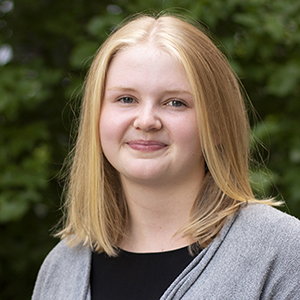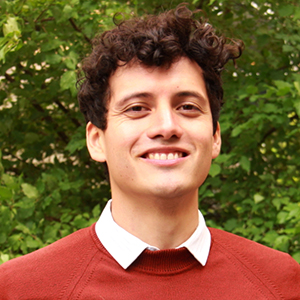Studying online exceeding expectations
What’s it like to study online? Better than they had thought, say the students themselves. The digital tools work well and the lectures are rolling along. But lab work online can be a bit tricky.

When the decision was made that KTH was closing its campuses for teaching, it felt both annoying and exciting, Anna Sandström tells us. She is reading Chemical Engineering and had never tried distance learning before.
“I really think it works better than I had expected. It’s easy to get connected to the lectures that are live. You can then write questions in a chat and put your hand up if you don’t understand something, just like in a normal lecture.”
Ebba Rovig, who is reading the Degree Programme in Media Technology, agrees. All her teachers quickly modified the course and she feels she is keeping pace with the syllabus. Lab sessions are another story, on the other hand.
“I’m taking three courses that are all based on lab sessions at the moment, which was unfortunate as programming sensors can be incredibly fiddly when it comes to assembling circuitboards correctly, for example. Even though help sessions are available via Skype, it’s a real challenge to getting guidance via a vide0 compared to face to face in the lab.”

Emma Schüldt, a computer science and engineering student, thinks practical work is almost the same as normal.
“You can show what you’ve done, digitally. Like you do in normal cases, you present your solutions and your code, and the teacher then asks you questions. It’s asking for help that is more difficult. Even though you can submit questions digitally, that’s not really the same as going for a help session on campus,” she says.
Several students expressed understanding that it can be difficult for teachers to create conditions that are as good as when you are on site. Andres Alonso Toledo Carrera, who is from Mexico and studying the Master’s Programme in Machine Learning, thinks that the teachers have done all they could do to create good digital learning environments:

“They have managed the situation very professionally and given us the tools and resources to be able to continue our studies as normal. At the same time, it has been a learning process for everyone, but it now feels as though we are becoming more and more comfortable with studying online.”
Some students would like to see a greater clarity when it comes to expectations:
“For me, the biggest omission in the switchover by KTH is that they haven’t provided a clear picture of what you are supposed to do on each course. Teachers use the Canvas platform in different ways and there is no digital tool that would make it easier for us to understand what needs to be done,” says Rovig.
Another challenge can be to set boundaries when you are studying at home – study and leisure time can easily overlap.

“As a general rule, I like to get out of the house to study, usually I go to KTH, or otherwise to a library or café. That means home becomes a free zone, which is great. It’s more difficult to do that in the same way, now,” says Schüldt.
Many of them are missing their friends. Anna Sandström usually socialises a lot with the other students on her course, and also often studies together with them.
“Obviously, you can have online meetings, but that’s not really the same as eating lunch together over a screen for example,” she says before offering her advice on how to keep up with your studies:
“I get dressed in the same clothes as though I were going to school and have a clear plan for the day. That works very well for me at least as I am managing to get plenty of work done.”
Text: Christer Gummeson

